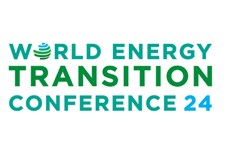API updates fire prevention and safety recommendations for refineries
Published by Callum O'Reilly,
Senior Editor
Hydrocarbon Engineering,
The American Petroleum Institute (API) has published an updated standard to address fire prevention and improve safety across the downstream segment of the industry.
RP 2001, ‘Fire Protection in Refineries’, includes important revisions on hazard analysis, new ways to improve the design of refineries to help prevent fires, and new information on managing the potential environmental impact of firefighting foams and marine firefighting.
API convened experts across the natural gas and oil industry, and collaborated with important stakeholders, including the National Fire Protection Association (NFPA) and the US Coast Guard on important updates made to this safety standard.
“API experts used state of the art information and key recommendations from NFPA, EPA, OSHA, and the US Coast Guard to develop the new edition of ‘Fire Protection in Refineries.’ Implementation of RP 2001 will advance the safety of downstream facilities’ operations, and safeguard the environment and surrounding communities,” said Debra Phillips, Vice President, API’s Global Industry Services.
“API RP 2001, Fire Protection in Refineries, is consistent with Chevron’s approach, which gives considerable attention to fire prevention practices and is not just about fire extinguishment. Implementation of the concepts within this document by corporate and field personnel will make their facilities safer for their workforce and neighbours as well as help protect their assets,” said Tim Blackford, Team Lead - Process Safety Engineering at Chevron Energy Technology Company.
Highlights of the revision for the 10th edition include:
- The use of hazard analysis throughout all states of designing, upgrading, or expanding a refinery to help prevent hazards (Section 5.2).
- Improvements to the layout of a refinery to prevent incidents related to: drainage process, site exits for egress, layout and spacing of process units, and the location of offsite facilities (Section 5.6).
- Consultation of fire protection experts prior to the use and/or disposal of firefighting foam, remediation of contaminated sites, and the conversion from existing synthetic firefighting foam concentrate to alternative chemistries in consideration of EPA’s PFOA Stewardship Program (Section 6.3.2).
- An informative Annex D on marine firefighting, which provides background information and references to documents developed by NFPA and the International Fire Service Training Association (IFSTA) to help protect land-based firefighters who could be called to fight a fire on a marine vessel.
Read the article online at: https://www.hydrocarbonengineering.com/refining/05072019/api-updates-fire-prevention-and-safety-recommendations-for-refineries/
You might also like
Viridi Energy signs 20-year agreement with Énergir
Viridi Energy, a renewable natural gas (RNG) platform, has signed a 20-year offtake agreement with Énergir, L.P.


